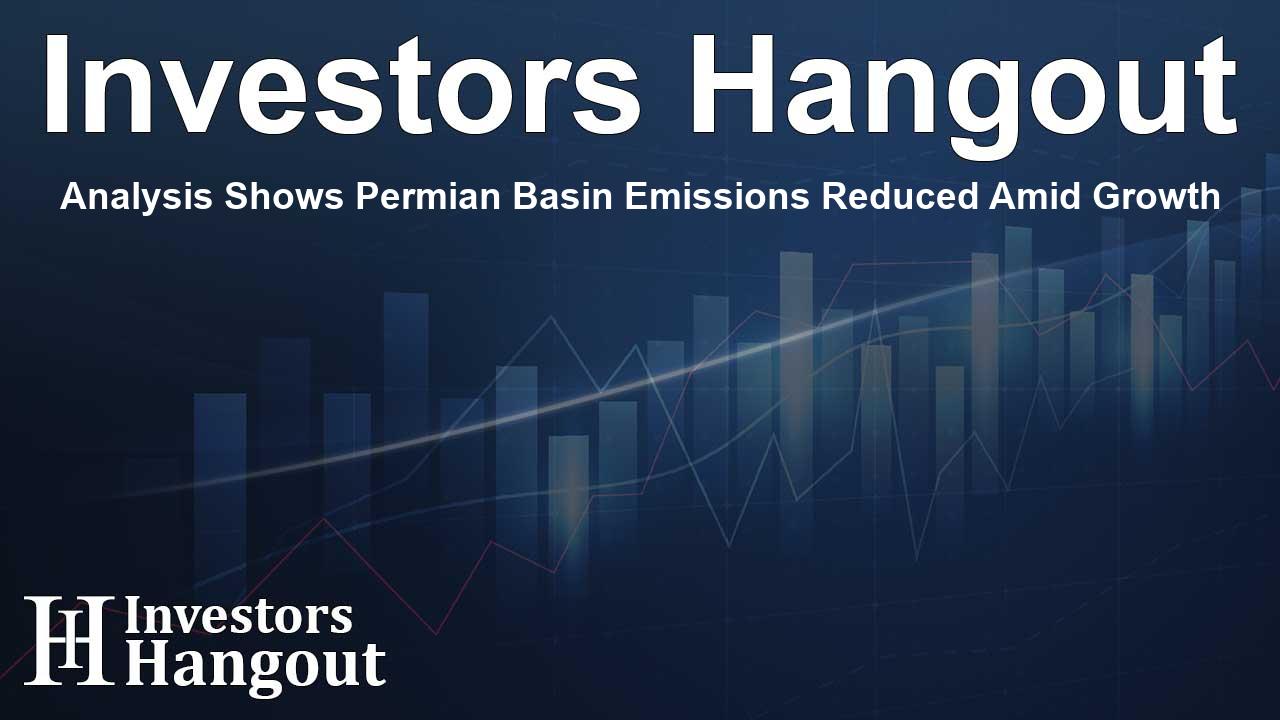Analysis Shows Permian Basin Emissions Reduced Amid Growth

Pervasive Emissions Reductions in the Permian Basin
Greenhouse gas emissions in the Permian Basin, renowned as one of the leading oil and gas production areas globally, have showcased a commendable decline of nearly 20% since 2022. This decrease is particularly noteworthy given that oil and gas production in the region has simultaneously increased. The analysis presents a transformative view on how production efficiency and emissions management coexist.
Impressive Emission Cuts Amidst Rising Production
According to recent insights, emissions have decreased by 25 million metric tons of carbon dioxide equivalent (MMt CO2e) from 2022 to 2024. This reduction has occurred even while production has expanded by approximately 500,000 barrels daily, highlighting a unique achievement in the industry where growth does not equate to higher emissions.
Significant Changes in Emissions Monitoring
The dramatic reduction in greenhouse gas intensity—essentially measuring emissions linked to the amount of oil and gas produced—underscores a shift in operational practices across the basin. Experts assert that this positive trend was unexpected, as historically, increased output typically leads to elevated emissions levels.
Technological Innovations Drive Improvements
Key to this remarkable achievement has been the enhanced detection and management of methane emissions, a potent greenhouse gas accounting for about two-thirds of total emissions in the Permian. Recent technological advancements, more rigorous operational practices, and the adoption of artificial intelligence have collectively contributed to a reduction in methane emissions intensity by over 50% during the analyzed period.
Importance of Accurate Data for Mitigation Efforts
The availability of high-quality observational data has established a more reliable baseline for emissions assessment, which aids companies in deploying better practices to manage emissions. This enhanced data not only facilitates accurate tracking but also drives a deeper integration of emissions management into everyday field operations.
Insights into Current Production Practices
The comprehensive analysis examined a myriad of factors affecting emissions and found that the average greenhouse gas intensity in the basin was 22 kilograms of carbon dioxide equivalent per barrel of oil equivalent produced in 2024. This underscores the importance of detailed assessments, as intensity metrics varied significantly across different wells.
Diverse Challenges in Emissions Control
Differences in emissions intensity from one well to another illustrate the complexity of emissions management in the Permian Basin. Ranging from over 160 kgCO2e/boe to less than 4 kgCO2e/boe, these discrepancies highlight the need for a nuanced understanding of how individual assets operate and influence overall emissions figures.
Understanding Emissions Models
The study's methodology for estimating emissions includes data from carbon dioxide, nitrous oxide, and methane emissions from upstream oil and gas operations. It factors in a wide range of activities, providing a holistic view of emissions profiles while excluding midstream transportation emissions.
High-Quality Methane Observation Enhances Estimations
Beginning in 2022, enhanced methane observational data was incorporated, significantly improving both the reliability and volume of methane emissions estimates. By using advanced methods, it has become possible to trace emissions back to specific sources accurately, achieving a depth of analysis previously unavailable.
Future Outlook for Emissions in the Industry
The ongoing efforts in emissions reduction are essential as the industry grapples with climate change and regulatory pressures. The shift toward lower emissions, even in times of increasing production, presents an encouraging path for sustainability in oil and gas sectors, demonstrating that efficiency gains are achievable.
Broader Implications for Energy Markets
The evolution in the Permian Basin serves as a case study for energy markets globally, emphasizing the possibility of securing resources responsibly while abiding by environmental standards. Efforts to mitigate emissions can play a crucial role in enhancing public perception and regulatory compliance, establishing a model for others in the energy sector to follow.
Frequently Asked Questions
What was the percentage reduction in emissions from the Permian Basin?
The Permian Basin saw a nearly 20% reduction in greenhouse gas emissions since 2022.
What percentage of U.S. oil and gas production comes from the Permian?
The Permian Basin is responsible for approximately 40% of the total oil and gas production in the United States.
How have technological advances impacted emissions in the Permian?
Technological innovations, particularly in methane detection and mitigation, have led to significant reductions in emissions intensity in the basin.
Why is the assessment of greenhouse gas emissions important?
Accurately assessing emissions is crucial for understanding the environmental impact of oil and gas operations and for implementing effective mitigation strategies.
What are the implications of reduced emissions for the oil and gas industry?
Lower emissions bolster the industry's public image, support compliance with regulations, and aid in the transition to more sustainable operations.
About The Author
Contact Dylan Bailey privately here. Or send an email with ATTN: Dylan Bailey as the subject to contact@investorshangout.com.
About Investors Hangout
Investors Hangout is a leading online stock forum for financial discussion and learning, offering a wide range of free tools and resources. It draws in traders of all levels, who exchange market knowledge, investigate trading tactics, and keep an eye on industry developments in real time. Featuring financial articles, stock message boards, quotes, charts, company profiles, and live news updates. Through cooperative learning and a wealth of informational resources, it helps users from novices creating their first portfolios to experts honing their techniques. Join Investors Hangout today: https://investorshangout.com/
The content of this article is based on factual, publicly available information and does not represent legal, financial, or investment advice. Investors Hangout does not offer financial advice, and the author is not a licensed financial advisor. Consult a qualified advisor before making any financial or investment decisions based on this article. This article should not be considered advice to purchase, sell, or hold any securities or other investments. If any of the material provided here is inaccurate, please contact us for corrections.
